Scythe Kaze Flex 120/140 ARGB Fan Review
Installation and Performance
The success of installing the Scythe Kaze Flex 120/140 ARGB fans will ultimately come down to how forgiving your case and motherboard are. While the ARGB cable is fantastically long, and will certainly provide you with no problems, the PWM one isn’t. In fact, although I didn’t measure it with a ruler, it’s no lengthier than about 10 inches meaning that if you, for example, install these as front intakes, you don’t have a lot of room to reach your motherboard, let alone get some decent cable management in.
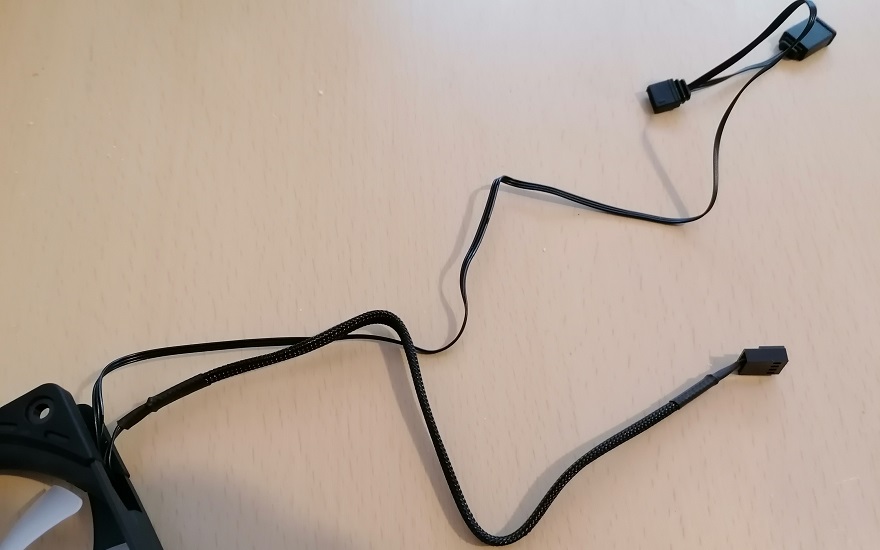
This is where things get strange, though, because while Scythe does provide you with a PWM extension cable, it’s only around 4 inches in length. Now, I know for a fact that if I, as above, fitted these fans into my case as front intake, even with this extension, it still wouldn’t reach my motherboard port. Put simply, I think the PWM, even with this adaptor, is way too short. More so though, why provide an extension that’s less than half the length of the actual cable itself?
Where things get really bad (or at least bizarre) though is that while the ARGB cable is huge, this can be daisy-chained whereas the PWM can not. Well, more accurately, does not out of the box. In other words, the longest cable (ARGB) offers you the best cable management while the shortest (PWM) would, at least in my opinion, barely be long enough for the majority of mid-tower cases. At least in terms of fitting it and tidying feeding the cable somewhere.
I just simply don’t understand why Scythe has bothered with this extension cable. If it was the same length as the PWM on the fan, great! Perfect even! Offering just 4 inches extra on an already limited cable though… It just seems like a waste of money for Scythe. Yes, for some users those extra 4 inches will be exactly what they needed. For the vast majority though? I’m definitely not convinced! – In fact, I’d rather the actual PWM cable was just a little bit longer (or at least as long as the ARGB is). Then they wouldn’t have had to bother with this extension at all and I (probably) wouldn’t be here grumbling about it.
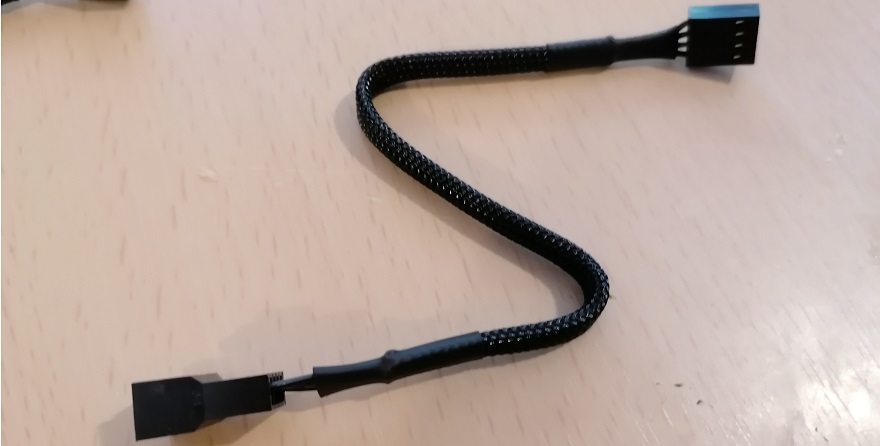
Functionality
Although we don’t have a firm methodology for testing fans (because setting one up would be really difficult), we do measure fan speed, airflow, and acoustic output to see if, generally speaking, it matches the performance listed on the packaging. It is, after all, important to know that the product matches its advertising.
So, is it? Well, by and large, yes. We freely admit that there is always a margin for error, and particularly so when the stated noise output is almost certainly conducted in absolute silence with no ambient noise (I have a 7-year-old, so it’s like having a lawnmower running all day long in my house). However, based on our testing, it does seem that the Kaze Flex 120 and 140 ARGB fans perform exactly as indicated.
Scythe Kaze Flex 120 ARGB – Single Fan in Operation
Fan Speed:
- Stated Maximum RPM – 1,200 +/- 10%
- Recorded RPM – 1,192 (100% load manually set in BIOS)
Result – Passed
Airflow (Recorded in CFM)
- Stated Maximum CFM – 51.17
- Recorded CFM – 48.18 (accepted under testing conditions)
Result – Passed
Acoustic Output (Recorded in dBA)
- Stated Maximum dBA – 24.90
- Recorded dBA – 25.14 (Adjusted to account for ambient noise)
Result – Passed
Scythe Kaze Flex 140 ARGB – Single Fan in Operation
Fan Speed:
- Stated Maximum RPM – 1,200 +/- 10%
- Recorded RPM – 1,166 (100% load manually set in BIOS)
Result – Passed
Airflow (Recorded in CFM)
- Stated Maximum CFM – 67.20
- Recorded CFM – 64.90 (accepted under testing conditions)
Result – Passed
Acoustic Output (Recorded in dBA)
- Stated Maximum dBA – 19.40
- Recorded dBA – 21.62 (Adjusted to account for ambient noise)
Result – Passed
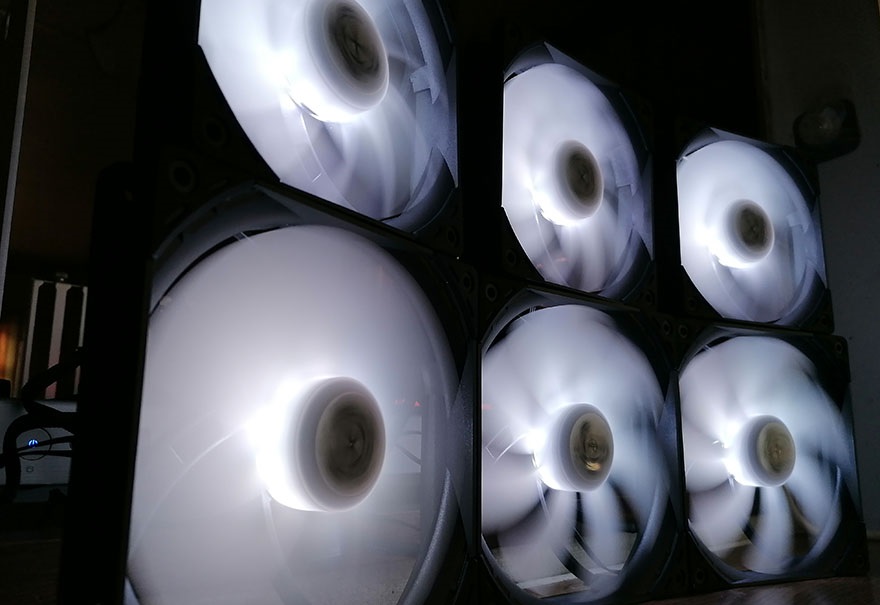
Fans In Action
Despite having a few troubles hooking all the fans up (due to the short length of the PWM cables), the ARGB worked perfectly and provided not only an impressive array of patterns but some exceptionally bright and vivid colours.
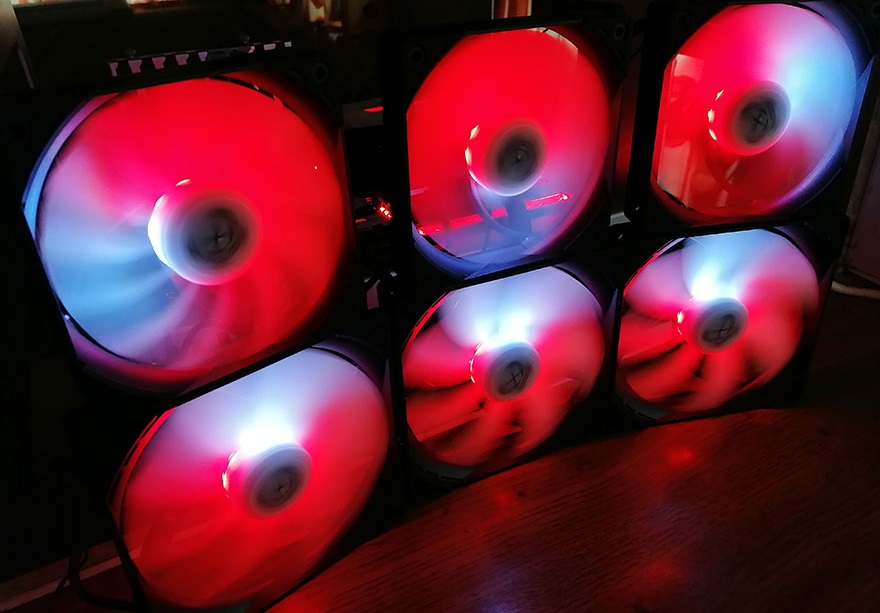
We should also note that, in addition to our testing, the noise output, even from 6 running at full blast, was surprisingly low while shifting an impressive amount of air that I could physically feel even standing 6 feet behind them. In fact, had it been a hotter day, I might’ve quite happily remained there for a while.
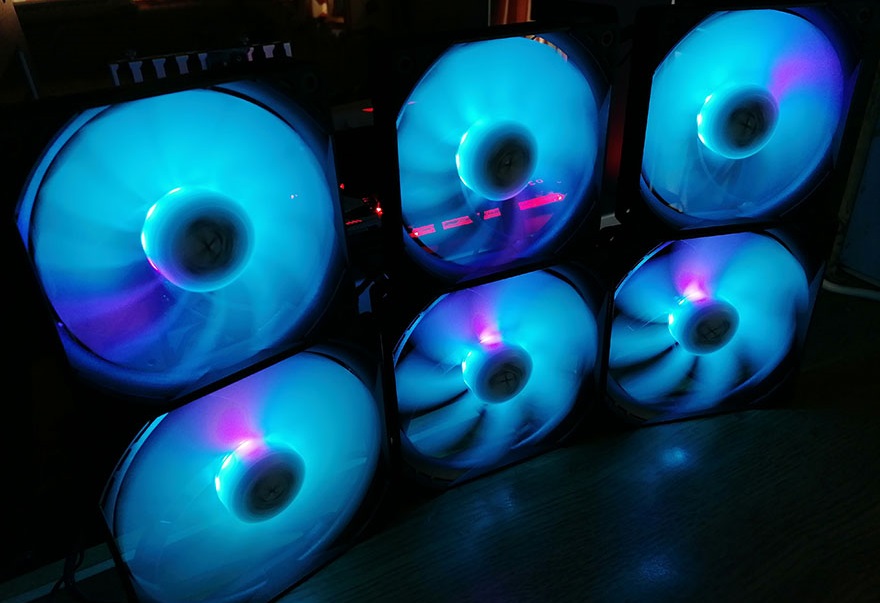
It is, however, one thing to take pictures of the ARGB lighting effects, where possible though, we like to put together a video showing them in action. As you can see below, the Scythe Kaze Flex 120 and 140 ARGB fans are very impressive to look at and, as such, would likely represent an excellent upgrade if not for your case fans, then potentially for your CPU cooler or AIO solution.
If anything though, the only mild complaint I have with these fans is that I wish the bezel was slightly larger. Although it does nearly imitate a ‘ring’ effect, as seen on significantly more expensive cooling fans, there is a notable gap to each main compass point that, overall, makes these look slightly less impressive than they would otherwise.








